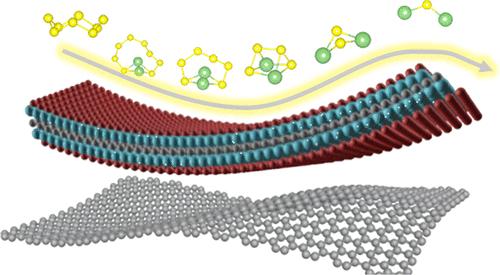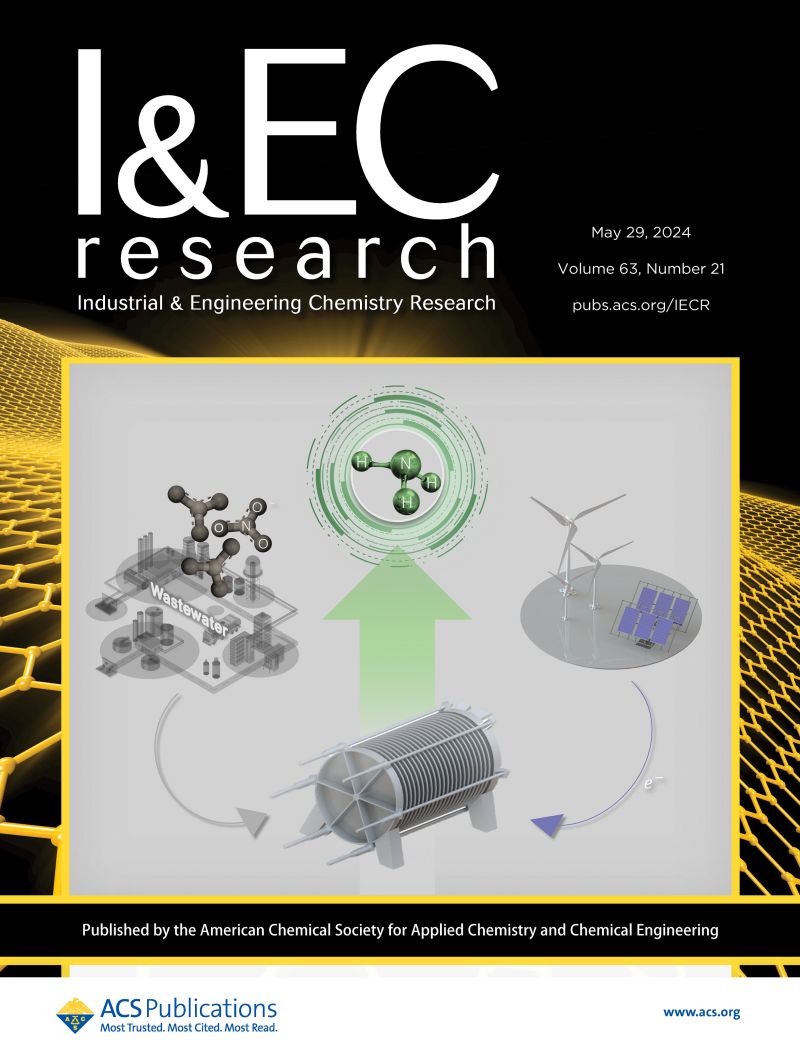Heterostructures of MXene and Graphene as Cathode Hosts Improving Anchoring and Reaction Dynamics for Li–S Batteries
IF 3.9
3区 工程技术
Q2 ENGINEERING, CHEMICAL
引用次数: 0
Abstract
Lithium–sulfur batteries have attracted great enthusiasm because of the high specific capacity and energy density, while the application is still limited by the “shuttle effect” of polysulfides and slow reaction dynamics. Here, different MXene-graphene heterostructures were used as sulfur cathode hosts, and the electrochemical performances were studied via first-principles simulation. Compared with a single MXene or graphene component, the MXene side of the heterostructure could more effectively anchor lithium polysulfides and inhibit the shuttle effect. However, more importantly, Ti2CS2-graphene heterostructures could more effectively promote the sulfur reduction reaction during the discharging process and reduce the diffusion barrier of Li+/decomposition barrier of Li2S during the charging process, which is beneficial for improving the sluggish dynamics in Li–S batteries. This work suggests that Ti2CS2-graphene heterostructures could be used as potential cathode hosts and provide theoretical guidelines for the design of cathode hosts for Li–S batteries.

MXene 和石墨烯的异质结构作为阴极宿主,改善锂-S 电池的锚定和反应动力学
锂硫电池因具有高比容量和能量密度而备受青睐,但其应用仍受到多硫化物 "穿梭效应 "和反应动力学缓慢的限制。本文采用不同的二氧化二烯-石墨烯异质结构作为硫阴极宿主,并通过第一性原理模拟研究了其电化学性能。与单一的 MXene 或石墨烯成分相比,异质结构中的 MXene 侧能更有效地锚定多硫化锂并抑制穿梭效应。然而,更重要的是,Ti2CS2-石墨烯异质结构能更有效地促进放电过程中的硫还原反应,并降低充电过程中 Li+ 的扩散阻力/Li2S 的分解阻力,这有利于改善锂-S 电池的迟滞动力学。这项研究表明,Ti2CS2-石墨烯异质结构可用作潜在的阴极宿主,并为锂-S 电池阴极宿主的设计提供了理论指导。
本文章由计算机程序翻译,如有差异,请以英文原文为准。
求助全文
约1分钟内获得全文
求助全文
来源期刊

Industrial & Engineering Chemistry Research
工程技术-工程:化工
CiteScore
7.40
自引率
7.10%
发文量
1467
审稿时长
2.8 months
期刊介绍:
ndustrial & Engineering Chemistry, with variations in title and format, has been published since 1909 by the American Chemical Society. Industrial & Engineering Chemistry Research is a weekly publication that reports industrial and academic research in the broad fields of applied chemistry and chemical engineering with special focus on fundamentals, processes, and products.
 求助内容:
求助内容: 应助结果提醒方式:
应助结果提醒方式:


